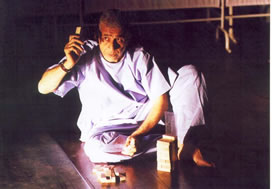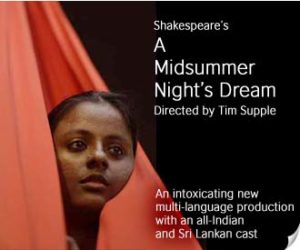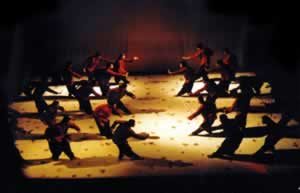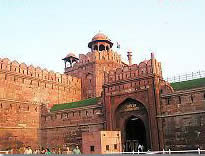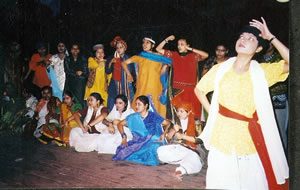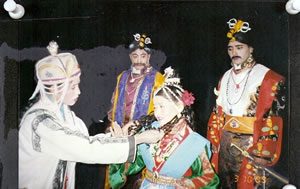Curtain Call / Keval Arora
For most of us, the curtain call is a ritual that marks the close of a performance. As a ritual it cuts both ways. It’s gratifying when we’ve enjoyed the show and wish to demonstrate our appreciation. Or, it’s a tiresome chore when we haven’t and are keen to duck our heads and run. Understandably, this spectacle of playmakers lined up to receive applause is often regarded as simply an appendage to the main event, a polite form of ‘goodbye’ and nothing more. But, I sometimes wonder if we have anything else, amongst the wide variety of conventions that govern the theatre, to match the curtain call in the way it underlines, with economy and assurance, the ‘live’ aspect of theatrical performance.
For, until that moment when performers shed their fictional selves and return to the stage in their own persons, the actor-spectator relation in the theatre is essentially no different from that found in other kinds of performance, such as the television or the cinema. That is to say, it is a relation where performers and audiences are hermetically sealed off from each other, each inhabiting qualitatively different zones of being. Sure, when compared to the actor in cinema/television who is a fixed and unvarying aggregate of pre-recorded decisions, the theatre actor is available as a ‘live’, volatile presence that forever holds out the promise of doing things differently in each performance. However, the degree to which the spectator is separated from the ‘character’ised actor in both these cases is remarkably similar. It is only with the curtain call in the theatre that the boundaries which segregate the two are comprehensively dissolved.
When actors slip out of their ‘characters’ and step up to receive the audience’s applause, when spectators gesture their appreciation directly to the actors, the world of make-believe finally ceases to be. The actor re-enters his own (and the audience’s) world, so to speak, and a different, informal, and more ‘real’ compact between the two parties in the performance equation comes into being. On the occasions when performers and spectators have interacted after the show, either through Q&A sessions or in cocktail-fuelled get-togethers, such cohabitation has taken on a life of its own. But, even when there is no post-performance transaction, the curtain call remains an acknowledgement, albeit brief and perfunctory, of the basic contract that underlies all theatre performance and consumption. As a gathering together of distinct strands of being, the curtain call affirms in its own way the communitarian nature of the theatre – a place where people come together to enact and to witness. It is therefore possible to celebrate the humble curtain call as a distinctive marker of theatrical performance.
Am I reading too much into what is today an automatic practice rather than a deliberated expression of pleasure and praise? Perhaps. But, the fact that we often feel guilty when we do not play our part as spectators (and therefore compensate by applauding the actors’ effort even when there is little of merit in their achievement) is proof that we attach value to such gestures, even when they are at their most mechanical.
Incidentally, we ought not to confuse such transitions, as formalised by the curtain call, with similar moments in the work of Bertolt Brecht. In Brecht’s theatre, we do find transitions from a fictive world peopled by actors to the everyday world of the audience, from the magic of ‘another place, another time’ to the reality of the ‘here and now’, but here these categories are sequential and mutually exclusive. Brecht’s theatre challenges the conventions that separate actor from character, and embeds the performer’s political responsibility within such equivalence. However, he works it out mainly as an interruptive device – that is, as a rupture which is most effective when it subverts the common assumption that the best works of art ought to possess an organic unity. The sequential and exclusionary quality of transition that is intrinsic to the curtain call is thus completely alien to the Brechtian project both in method and intent.
It is interesting to note that in Ebrahim Alkazi’s time at the National School of Drama, the NSD Repertory did not take curtain calls. Not (though one can never be sure of the reasons for this policy) in spite of its celebratory nature, but because of it. For, the one danger with curtain calls is that these can be hijacked, by performer and spectator alike, into re-structuring relations in terms that are quite inimical to the collaborative nature of theatre production. An instance: curtain calls, especially in our English-language theatre, are often arranged as a series of separate entrances, with actors in the leading roles being the last to complete the line-up while minions in the minor parts are thrust in right at the beginning. The purpose may well be to lead the audience into a swelling applause which culminates in a final burst of appreciation for the lead actors. But talent isn’t always marked by such an easy lineage – the lead may have been boringly flat, whereas a small cameo may have provided the production’s abiding memory. Also, when audiences are encouraged to applaud each actor’s contribution separately, and when the play’s cast is stratified in a hierarchy of minor and major actors, theatre groups’ claims to being ensembles of equal contributors stand embarrassingly exposed.
It is now the accepted thing, after the clapping is over and done with, for actors to call the backstage and production crew on stage, to gesture towards the lights and sound booths, and then to invite the director onto the stage. Which most directors do after a decent pause, as if caught short by an unexpected request. Apart from the peculiar arrangement of this credits sequence, I’ve always found it interesting that directors preface their arrival on stage by an ‘invitation’ extended by the cast, especially as it is usually the director who orchestrates the curtain call in the first place! What is this – humility, coyness, or self-celebration?
Role-playing of course isn’t confined only to the performers. You can find it even in something as uni-dimensional as applause. The recent tendency of Delhi’s English-language theatre audiences to offer standing ovations – or, as a friend pointed out the other day, “an ovation while standing” – to even mediocre productions, in apparent deference to the pedigree of the performing group, is evidence of yet another kind of hijacking of the curtain call, and that by the spectators this time!
One spin-off of austerity such as the NSD’s is that it reminds actors to look at the work at hand as something to be done for its own sake rather than for the plaudits that could come their way. I must however confess that, despite my belief that this is a good thing (especially in the environs of a training school), I too have felt cheated and resentful, when I have thoroughly enjoyed a production, at being denied an opportunity to demonstrate my appreciation. Perhaps the mainstream theatre too needs a dose of such self-denial, for it could do with less self-congratulatory preening and greater attention to quality.
The curtain call, like most artistic conventions, can be employed to great effect. Either through silence and a no-show (as in Rabih Mroue’s Looking for a Missing Employee, performed at NSD’s Theatre Utsav 2006); or through a technique of ironic quotation (as in the TAG production of Peter Weiss’ Marat/Sade several decades ago).
The curtain-call Peter Brook devised for his well-known production of Marat/Sade closed with the chorus of asylum inmates breaking into a slow handclap in mimicry of the audience’s end-of-show applause. Each time this happened during the TAG production at the Kamani (Barry John had picked up the idea from Brook’s production, lock, stock and barrel), the audience’s applause had petered out, as if to demonstrate that audiences are capable of lapping up even the most savage spectacles of non-conformism only so long as they aren’t made to feel they’re the victims. By thus undermining the sanctity of this ‘last of meeting places’ and challenging the comforting superiority that spectators usually feel in their capacity as observers, Brook seemed to have made his audiences experience a truth which was till then for them only an aspect of the fiction.
It’s of course another matter that Brook’s decision to make the actors, who played the inmates of the lunatic asylum, stay within their characters as they mimicked and parodied the audience’s behaviour during the curtain call dilutes its subversive thrust considerably. With spectators finding it easy to deflect whatever discomfort they may have initially felt (these guys are mad after all!), Brook’s innovation shows up as surprisingly inelastic, an innovation that agitates the surface but leaves the essential structure placidly intact.
Mroue’s Looking for a Missing Employee was a solo narration of a man trying to piece together – through print and TV news clippings, interviews, and of course logical deduction – the story of a real bureaucrat who suddenly went missing in Beirut. The performance’s highlight lay in the narration being delivered entirely through live and recorded videocam feeds projected simultaneously on three video screens. The stage, consisting of just a table and chair, remained unused throughout the performance. What then could be a more fitting conclusion to this brilliant performance of a tale of a missing man, by an actor missing from the stage, than a no-show by the performer-director during the curtain call? The audience at the Abhimanch that January night had hung on, applauding no one in particular and testing Mroue’s determination to stay away from the stage. But, as the minutes went by and the audience milled about confusedly, it struck me that we were experiencing an unscripted, impromptu performance that could be titled ‘Looking for a Missing Performer’. As in the case of Marat/Sade, this production too extended its thematic dynamics into a space that properly does not belong to the fiction, but for precisely that reason can be used to extend meanings in a different and perhaps more resonant register.



